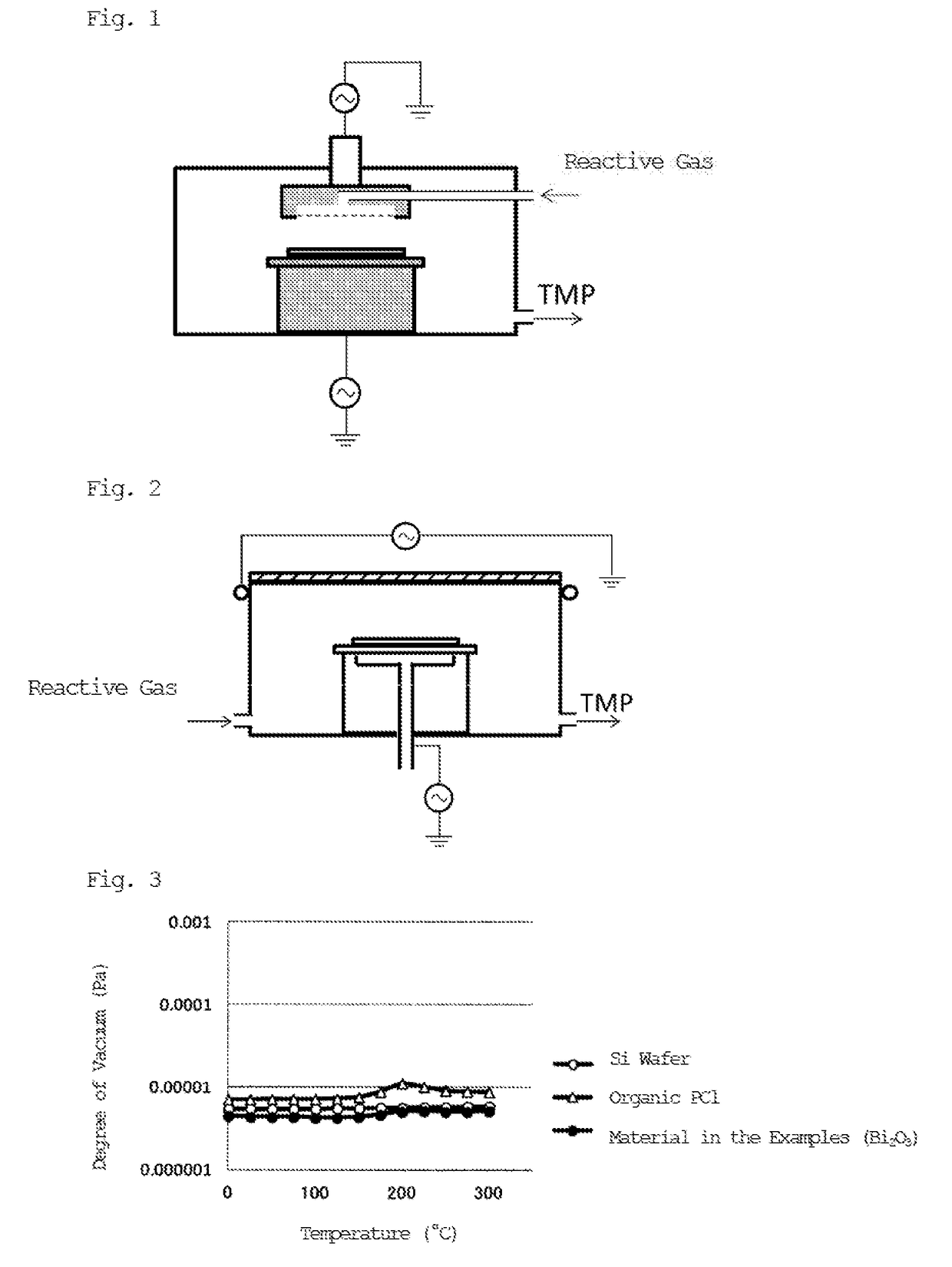Plasma processing detection indicator using inorganic substance as a color-change layer
a technology of inorganic substances and detection indicators, applied in the direction of bismuth compounds, plasma techniques, chemical vapor deposition coatings, etc., can solve the problems of insufficient performance of the detection indicators used in difficult to perform efficient measurement or analysis, and reduce the cleanliness of electronic device production equipment, so as to suppress the gasification of the color-changing layer and maintain a high-quality environment
- Summary
- Abstract
- Description
- Claims
- Application Information
AI Technical Summary
Benefits of technology
Problems solved by technology
Method used
Image
Examples
examples
[0074]The following describes the present invention in detail by showing Examples and Comparative Examples. However, the present invention is not limited to the Examples.
examples 1 to 5
Preparation of Indicator Consisting of Color-Changing Layer in Pellet Form
[0075]The following were prepared for use i the Examples as inorganic powders of the present invention (metal oxide powder).[0076]Example 1: MoO3 powder (Wako Pure Chemical Industries, Ltd., mean particle size: 60 μm, 0.3 g)[0077]Example 2: WO,3 powder (Wake Pure Chemical industries, Ltd., mean particle size: 60 μm, 0.3 g)[0078]Example 3: V2O3 powder (Wako Pure Chemical Industries, Ltd., mean particle size: 60 μm, 0.3 g)[0079]Example 4: V2O5 (Wako Pure Chemical Industries, Ltd., mean particle size: 60 μm, 0.3 g)[0080]Example 5: Bi2O3 powder (Wake Pure Chemical Industries, Ltd., mean particle size: 60 μm, 0.3 g)
[0081]Each metal oxide powder was molded into a pellet form with a press machine, and then sintered in an electric furnace (600° C., 1 hour), thereby preparing an indicator consisting of a color-changing layer in pellet form (φ=7 mm, t=2 mm).
example 6
Preparation of Indicator Formed by Depositing a Thin Color-Changing Layer on a Base Material
[0082]A slurry of the formulation shown in Table 1 below was prepared, and applied on a quartz substrate and calcined, thereby forming a 500-nm Bi2O3 thin film on the substrate.
TABLE 1Name of Substancewt %Bismuth(III) Oxide5Turpentine Oil45N-butyl Acetate22Ethyl Acetate8Stabilizer20Total100
[0083]Specifically, the slurry containing Bi2O3 of the formulation shown above was spin coated (2000 rpm, 20 sec.) on a 4-inch Si wafer, which is a substrate, and then the coated film was dried in the atmosphere at 120° C. for 10 minutes, followed by calcination of the coating film in the atmosphere at 550° C. for 10 minutes, thereby forming a Bi2O3 thin film. This prepared an indicator having a thin color-changing layer deposited on the base material.
PUM
| Property | Measurement | Unit |
|---|---|---|
| thickness | aaaaa | aaaaa |
| thickness | aaaaa | aaaaa |
| width | aaaaa | aaaaa |
Abstract
Description
Claims
Application Information
 Login to View More
Login to View More - R&D
- Intellectual Property
- Life Sciences
- Materials
- Tech Scout
- Unparalleled Data Quality
- Higher Quality Content
- 60% Fewer Hallucinations
Browse by: Latest US Patents, China's latest patents, Technical Efficacy Thesaurus, Application Domain, Technology Topic, Popular Technical Reports.
© 2025 PatSnap. All rights reserved.Legal|Privacy policy|Modern Slavery Act Transparency Statement|Sitemap|About US| Contact US: help@patsnap.com

